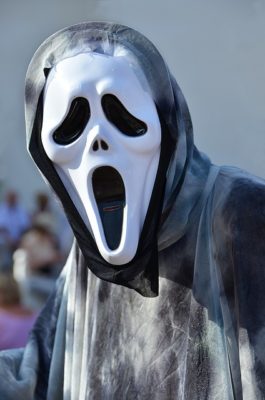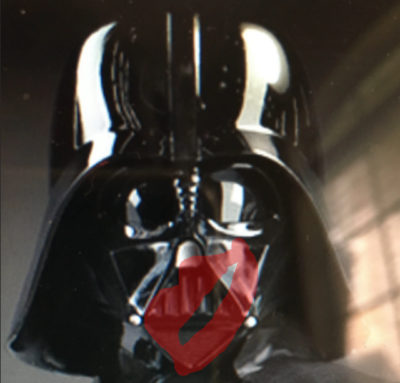
Do it with prose poetry.
When my friend, Clark, sent me his pre-MFA collection of poems, I flipped through the book and flipped again, backing up, sitting down, reading in depth. Clark had written a set of lined poems that torched my imagination. In his letter to me, he said:
“ . . . the prose poem concept intrigues me. I think I could probably take some of the poem ideas from this book I sent you and write some prose poems.”
Yes. My thoughts exactly. I asked Clark’s permission to take one poem, convert it to a prose poem and publish it on the WAG blog, including his comments on the process. He agreed. Thanks, Clark.
Here is the original poem followed by my prose poem take-off.
Our Masks*
Who are we, really?
A cardboard Vader, dragon
Hiding safe inside.
What roles do we play?
A marching von Trapp puppet,
A memorized script.
We ran with a crowd
Played a sport or a horn
To define, belong.
We chose our first job,
Mowing lawns, snapping pictures.
Doing our bus’ness.
Masks, roles, tasks, and teams
Tell others what we do, but
What still hides inside?
Hiding Behind A Mask
by Kaye Linden
Cardboard Darth Vader, leery red-lipsticked grin painted on sideways, fits well on my face. Am I Darth?
Von Trapp puppet marching, wooden, stiff-legged, joints oiled with WD40. Fits well in my hovering hands.
Running with the Halloween crowd, up street, down street, front door, back door, face behind Creepy Clown mask. Hands out for more. For more. For more. Am I Creepy? Or a clown with a fitted human shield?
Mowing lawns for money, beekeeping for money, (no, not honey, money) trapped by the beekeeper’s mask.
Still Halloween, you say?
Masks, roles, trolls, tasks, teams of gawking hiders in plaster- of- Paris corners, peering from eye slits— smell the acrid breath of wolves on the hunt, jackals howling together.
What am I? Hunter, Halloweener, Masked Queen, Shotgun Wizard, Trigger Finger wagging at the boy in the garish tiger mask.
And I say: How dare he hide behind a mask.
After reading my prose poem, Clark said:
“Wow, you took that a long way from my simple start. Seems a little like ‘stream-of-consciousness’ where the mind jumps to something the previous thought kindled, and then to a next one, with little flashes of detail, ideas, welcomed but not judged, just a flow. I think I can do that.”
Can you? First, name two main differences between the poem Clark wrote and the prose poem above, apart from broken lines? And here are a few tips from 35 Tips for Writing Powerful Prose Poems:
Prose poets . . .
- usually do not use the rhymes, rhythms, and line breaks of traditional poetry.
- aim to arouse an emotional response in the reader.
- hope to amaze and delight.
- choose words carefully; each word is important.
- use poetic language, metaphors, and similes.
- concentrate on scenes, description and surprise.
- read their prose poems aloud because this is the best way to hear mistakes; to catch inconsistencies and skips in rhythm or meaning; to check the pacing and tense, and to identify shifts in point of view.
Prose poetry . . .
- speaks about the truth of the world as the poet sees it.
- should be clear, understandable, and make sense; otherwise, poems are just words. splashed on paper.
- skillfully selects language that inspires the reader.
- can have a story line, but does not need a story line.
- has a center of gravity the way the earth has a molten core.
- includes full sentences.
- can consist of a sentence, a few sentences, a paragraph—or longer.
- has a narrative shape on the page; that’s the reason it is called “prose” poetry.
Now, set a timer to ten minutes while you write freely about masks.
I’d love to know how it turns out.
__________________
*(From “rough drafts” poetic journal of a mid-life male, by Clark G. Parsons.)


Pat Caren
Good post, Kaye. I didn’t take up your challenge, but I definitely will try writing prose poetry.